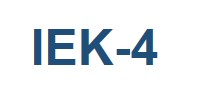Collaborations | ||||||||||||||||||||||||||||
|
Cooperations related to EIRENE-CFD packages EIRENE (kinetic code) is mostly used in the iterative scheme with various fluid codes – see “EIRENE basics” for details. Thus we naturally have the strong links to the CFD-code developers. EIRENE provides interfaces to all the codes listed below. The resulting packages may operate under their own licence, however one has to accept the EPL to use the EIRENE.
Cooperations regarding A&M data and CRMs A significant part of the EIRENE-NGM simulation deals with the elementary processes for atomic and molecular (A&M) species on their way through the plasma. The construction of the related collisional-radiative models (CRM) and the compilation of the related databanks for reaction rates are among the main development activities.
Cooperation inside EUROfusion The fusion-relevant integrated modelling effort inside EUROfusion is significantly grouped inside the WP AC task force, E-TASC activity [Litaudon22]. The EIRENE-NGM development is supported within the TSVV-5 "Neutral gas dynamics in the edge" subproject (TSVV stays for Theory-Simulation-Verification-Validation). This subproject was started in 2020 on the base of the preliminary pilot one. Obviously, the EIRENE-NGM development has strong links to the other parts of the E-TASC activity, in particular TSVV-3, TSVV-6, TSVV-7 and TSVV-11. Moreover, TSVV-5, TSVV-6 and TSVV-7 are joint into one "thrust" associated with the WP PWIE (Plasma-Wall Interaction and Exhaust) task force. In addition, we have a strong link to EU-DEMO modelling inside the PW DC task, for instance EIRENE-NGM is a key tool for simulations aimed to assist detachment control by spectroscopy. |

